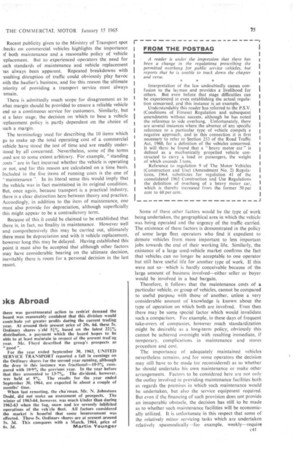FROM THE POSTBAG
Page 77

If you've noticed an error in this article please click here to report it so we can fix it.
A reader is under the impression that there has been a change in the regulations prescribing the permitted overhang for public service vehicles, but reports that he is unable to track down the chapter and verse.
Interpretation of the law undoubtedly causes confusion to the layman and provides a livelihood for others. But even before that stage difficulties can be experienced in even establishing the actual regulation concerned, and this instance is an example. Understandably this reader has referred to the P.S.V. (Conditions of Fitness) Regulation and subsequent amendments without success, although he has noted the reference to side overhang. Unfortunately, there are several instances where the absence of any specific reference to a particular type of vehicle compels a negative approach, and in this connection it is first necessary to refer to Section 253 of the Road Traffic Act, 1960, for a definition of the vehicles concerned. It will there be found that a "heavy motor car" is defined as a mechanically propelled vehicle constructed to carry a load or passengers, the weight of which exceeds 3 tons.
Reference to regulation 9 of The Motor Vehicles (Construction and Use) (Amendment No. 2) Regulations, 1964, substitutes for regulation 41 of the consolidated 1%3 Construction and Use Regulations the definition of overhang of a heavy motor car, which is thereby increased from the former 50 per cent to 60 per cent.
























































































































